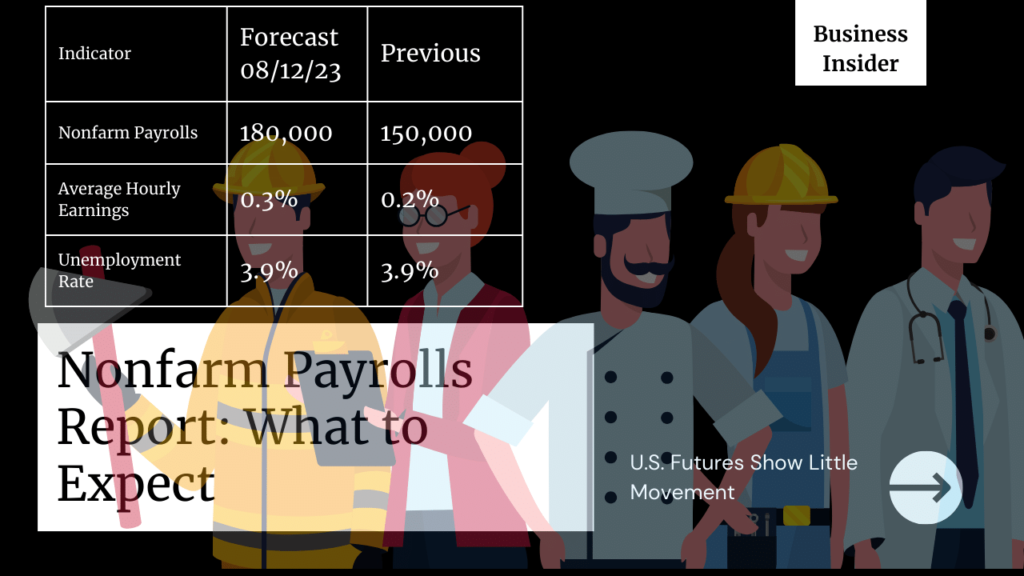In the fast-paced world of financial markets, every data release is like a ripple that can turn into a wave, influencing decisions and sparking movements. As we stand on the cusp of another significant revelation, the spotlight is firmly on the forthcoming November U.S. nonfarm payroll report—a crucial indicator that may offer insights into the state of the American labor market and act as a guiding light for the Federal Reserve’s future policy decisions.
Unlocking the Mysteries: Nonfarm Payrolls in Focus
The anticipation in the air is palpable as economists project the addition of 180,000 roles in November, a modest increase from the preceding month’s 150,000. Delving deeper, attention is also directed toward the average hourly earnings, a pivotal measure of wage growth. Forecasts suggest a monthly acceleration of 0.3% compared to October’s 0.2%. Simultaneously, the unemployment rate in the world’s largest economy is poised to hold steady at 3.9%, mirroring October’s figures.

Shifting Sands of the Labor Market
A week of data releases leading up to this moment has painted a nuanced picture. Signs of an unprecedented series of interest rate hikes by the Federal Reserve have begun to ripple through the labor market. Job openings touched a 2-1/2-year low, and October witnessed fewer workers resigning from their positions. Adding to the intrigue, private employers fell short of expectations in terms of job additions.
The Fed’s Tug of War: Labor Demand vs. Rate Hikes
Cooling the labor market has become a central theme in the Fed’s narrative, aligning with their strategy to elevate borrowing costs to levels unseen in more than two decades. The underlying theory is that a slowdown in demand for workers could ease upward pressure on wages, subsequently assisting in achieving the Fed’s paramount objective—taming elevated inflation.
Global Moves: Apple’s Strategic Shift
While the U.S. labor market dances on the edge of speculation, tech giant Apple and its suppliers are making strategic moves on the global stage. Reports suggest a quarter of global iPhone production could find a new home in India, signaling a proactive effort to reduce dependency on China during a period of strained relations between the U.S. and Beijing.
Reading the Tea Leaves: What Lies Ahead
As the stage is set for the unveiling of the nonfarm payroll report, market participants are bracing for potential aftershocks. The interplay between labor market dynamics and the Federal Reserve’s policy decisions will undoubtedly reverberate through various asset classes. The following table encapsulates key expectations for the upcoming report:
| Indicator | Forecast | Previous |
|---|---|---|
| Nonfarm Payrolls | 180,000 | 150,000 |
| Average Hourly Earnings | 0.3% | 0.2% |
| Unemployment Rate | 3.9% | 3.9% |
Navigating the Waves: Implications for Investors
Investors are advised to stay vigilant, considering the potential impact of the data release on market sentiments. The following bullet points encapsulate key considerations:
- Federal Reserve Signals: A notable deviation from the projected figures could influence the Federal Reserve’s stance on interest rates, potentially shaping the trajectory of future rate hikes.
- Wage Growth Dynamics: The acceleration or deceleration of average hourly earnings may have implications for inflationary pressures, providing cues for investors navigating the current economic landscape.
- Global Macroeconomic Trends: Beyond the borders of the U.S., global economic dynamics, geopolitical tensions, and strategic moves by major corporations can add an additional layer of complexity to market movements.
In Conclusion: Deciphering the Economic Oracle
In the labyrinth of economic indicators, the nonfarm payroll report stands out as a key oracle, offering glimpses into the intricate dance of supply and demand in the labor market. As we await the unveiling of the November figures, the ripples of speculation are already in motion.
In the intricate tapestry of the financial world, every data point weaves a story—a story of markets responding to economic shifts, investors navigating uncertainties, and policymakers calibrating their strategies. The nonfarm payroll report is not merely a collection of numbers; it’s a narrative that shapes the contours of the financial landscape.
As the curtain rises on the impending report, let us brace ourselves for the revelations it holds. The interplay of data, expectations, and market reactions will continue to be a captivating saga—a saga that keeps us on the edge, decoding the language of the markets in pursuit of financial acumen.
In the ever-evolving world of finance, one thing remains constant—the quest for understanding, the pursuit of knowledge, and the ability to decipher the signals that move markets. As we navigate the currents of uncertainty, the nonfarm payroll report stands as a compass, guiding us through the labyrinth of economic intricacies.
Nonfarm payrolls—the heartbeat of the economy, the pulse of the markets. The journey continues.
